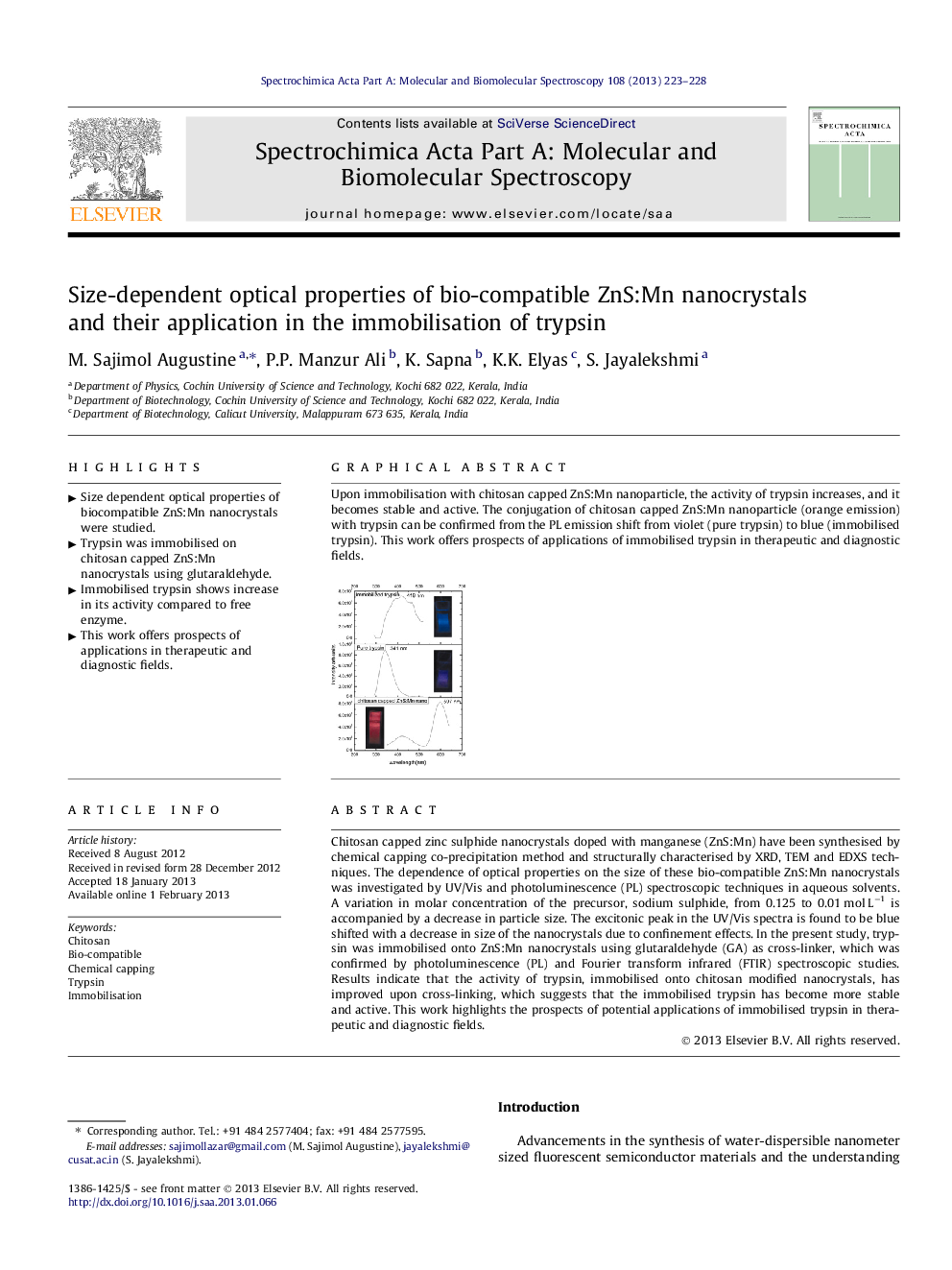| Article ID | Journal | Published Year | Pages | File Type |
|---|---|---|---|---|
| 1234772 | Spectrochimica Acta Part A: Molecular and Biomolecular Spectroscopy | 2013 | 6 Pages |
Chitosan capped zinc sulphide nanocrystals doped with manganese (ZnS:Mn) have been synthesised by chemical capping co-precipitation method and structurally characterised by XRD, TEM and EDXS techniques. The dependence of optical properties on the size of these bio-compatible ZnS:Mn nanocrystals was investigated by UV/Vis and photoluminescence (PL) spectroscopic techniques in aqueous solvents. A variation in molar concentration of the precursor, sodium sulphide, from 0.125 to 0.01 mol L−1 is accompanied by a decrease in particle size. The excitonic peak in the UV/Vis spectra is found to be blue shifted with a decrease in size of the nanocrystals due to confinement effects. In the present study, trypsin was immobilised onto ZnS:Mn nanocrystals using glutaraldehyde (GA) as cross-linker, which was confirmed by photoluminescence (PL) and Fourier transform infrared (FTIR) spectroscopic studies. Results indicate that the activity of trypsin, immobilised onto chitosan modified nanocrystals, has improved upon cross-linking, which suggests that the immobilised trypsin has become more stable and active. This work highlights the prospects of potential applications of immobilised trypsin in therapeutic and diagnostic fields.
Graphical abstractUpon immobilisation with chitosan capped ZnS:Mn nanoparticle, the activity of trypsin increases, and it becomes stable and active. The conjugation of chitosan capped ZnS:Mn nanoparticle (orange emission) with trypsin can be confirmed from the PL emission shift from violet (pure trypsin) to blue (immobilised trypsin). This work offers prospects of applications of immobilised trypsin in therapeutic and diagnostic fields.Figure optionsDownload full-size imageDownload as PowerPoint slideHighlights► Size dependent optical properties of biocompatible ZnS:Mn nanocrystals were studied. ► Trypsin was immobilised on chitosan capped ZnS:Mn nanocrystals using glutaraldehyde. ► Immobilised trypsin shows increase in its activity compared to free enzyme. ► This work offers prospects of applications in therapeutic and diagnostic fields.
